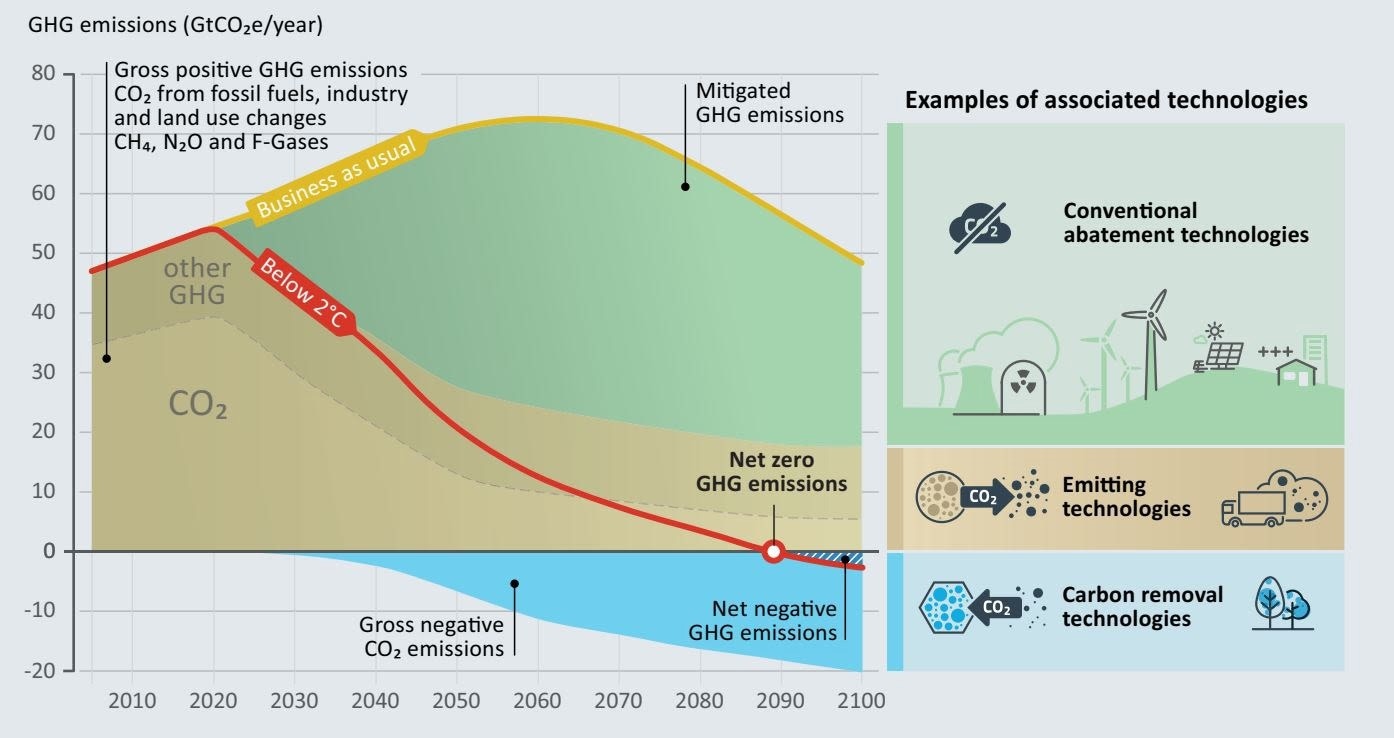According to a recent study published in Global Environmental Change, individuals exhibit a greater degree of positivity towards reforestation and rainforest preservation as strategies for addressing climate change compared to their perception of technological solutions.

The mitigation of greenhouse gas emissions can be achieved by avoiding emissions (e.g. through technologies and changes in human behavior) and carbon dioxide removal from the atmosphere. Image Credit: UNEP Emission Gap Report (2017)
The research, based on an analysis of over one million social media posts, suggests that people are more optimistic about nature’s potential to mitigate climate change than the capabilities of human technology.
The study, which involved examining 1.5 million posts on the platform formerly known as Twitter (X), utilizing cutting-edge artificial intelligence-driven language models, identified instances of “disgust” and “fear” associated with the concept of "geoengineering." Geoengineering often involves unconventional technological approaches, such as aerosol spraying into the atmosphere or the deployment of solar space sails.
However, researchers from the University of Cambridge, the Mercator Research Institute, the International Institute for Applied Systems Analysis (IIASA), and Boston University found that discussions related to nature-based initiatives aimed at preserving carbon-storing ecosystems, including rainforests, subaqueous kelp forests, and peat bogs, elicited more favorable sentiments such as "joy" in social media posts.
Social media provides an opportunity to tap into the ocean of thoughts and feelings people are sharing in public conversations about emerging technologies. Governments and global organizations need to consider how the voting public will engage with proposed solutions of climate action.
Ramit Debnath, Study Co-Author, Assistant Professor and Cambridge Zero Fellow, University of Cambridge
According to projections by the Intergovernmental Panel on Climate Change (IPCC), the United Nations body responsible for assessing climate science, the conventional approach of gradually reducing greenhouse gas emissions like carbon dioxide and methane may no longer suffice to keep global warming below the critical threshold of 2 °C.
This threshold marks the point at which catastrophic weather events, such as extreme heat, storms, droughts, and floods, become increasingly severe.
In addition to the ongoing efforts to incrementally reduce global emissions stemming from fossil fuel usage in power generation, industry, residential heating, transportation, and food production, the IPCC has emphasized the necessity of actively “geoengineering” climate solutions.
This proactive approach involves mitigating further warming by either removing greenhouse gases that trap solar energy or by reflecting excess sunlight.
A comprehensive study conducted by researchers examined social media posts made by users of platform X from 2006 to 2021 regarding 20 emerging climate technologies.
These technologies range from ecological restoration and tree planting to more radical approaches like artificial cloud manipulation and solar radiation management, as well as general discussions on “geoengineering.”
Given the challenge of assessing public sentiment through conventional survey methods, the study's authors argued that sifting through X-user posts provides a valuable means of capturing candid and unfiltered opinions about these technologies.
When you're not familiar with [these] issues, you can be strongly influenced by the way the questions are asked. That’s why we chose a different approach: we were interested in how people engage with these topics without being asked.
Finn Müller-Hansen, Study Lead Author and Researcher, Mercator Research Institute on Global Commons and Climate Change (MCC)
Out of the nearly 800,000 posts on platform X that generally addressed the topic of “geoengineering,” unfavorable sentiments were prevalent, with negative expressions present in 30% of all tweets, outweighing the positive ones at 6%.
However, when the researchers delved into public opinions regarding specific approaches, they discovered a more favorable reception for strategies aimed at removing greenhouse gases (24% positive, 14% negative) than for technologies involving solar manipulation (9% positive, 24% negative).
This inclination towards positivity becomes more pronounced when the removal methods are perceived as “natural,” with the highest level of approval found for tree-planting solutions, often referred to as “afforestation.” In their concluding remarks, the authors recommend avoiding the frequently misunderstood term “geoengineering,” which encompasses a wide range of efforts to combat climate change, encompassing both technological and natural solutions.
From our study, we’ve uncovered where the public anxiety about ‘geoengineering’ solutions is being directed. It’s up to scientists and policymakers to either clear up these concerns and try to bring people around, or listen to the public, who at this moment are more supportive of nature-based solutions.
Ramit Debnath, Study Co-Author, Assistant Professor and Cambridge Zero Fellow, University of Cambridge
Journal Reference
Müller-Hansen, F., et al. (2023) Attention, sentiments and emotions towards emerging climate technologies on Twitter. Global Environmental Change. doi.org/10.1016/j.gloenvcha.2023.102765.